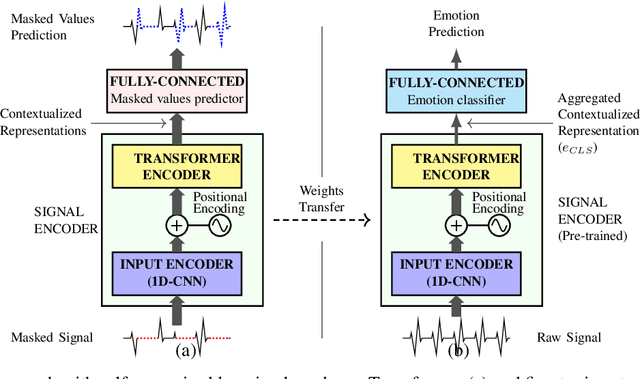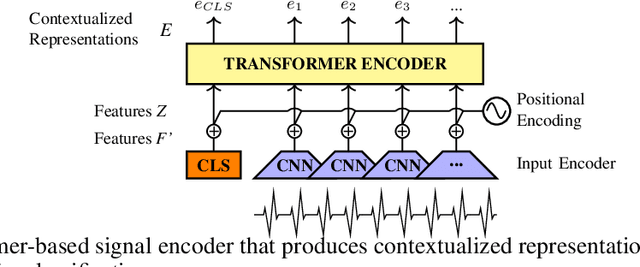Juan Vazquez-Rodriguez
M-PSI
Accommodating Missing Modalities in Time-Continuous Multimodal Emotion Recognition
Nov 16, 2023Abstract:Decades of research indicate that emotion recognition is more effective when drawing information from multiple modalities. But what if some modalities are sometimes missing? To address this problem, we propose a novel Transformer-based architecture for recognizing valence and arousal in a time-continuous manner even with missing input modalities. We use a coupling of cross-attention and self-attention mechanisms to emphasize relationships between modalities during time and enhance the learning process on weak salient inputs. Experimental results on the Ulm-TSST dataset show that our model exhibits an improvement of the concordance correlation coefficient evaluation of 37% when predicting arousal values and 30% when predicting valence values, compared to a late-fusion baseline approach.
Emotion Recognition with Pre-Trained Transformers Using Multimodal Signals
Dec 22, 2022Abstract:In this paper, we address the problem of multimodal emotion recognition from multiple physiological signals. We demonstrate that a Transformer-based approach is suitable for this task. In addition, we present how such models may be pretrained in a multimodal scenario to improve emotion recognition performances. We evaluate the benefits of using multimodal inputs and pre-training with our approach on a state-ofthe-art dataset.
Transformer-Based Self-Supervised Learning for Emotion Recognition
Apr 08, 2022



Abstract:In order to exploit representations of time-series signals, such as physiological signals, it is essential that these representations capture relevant information from the whole signal. In this work, we propose to use a Transformer-based model to process electrocardiograms (ECG) for emotion recognition. Attention mechanisms of the Transformer can be used to build contextualized representations for a signal, giving more importance to relevant parts. These representations may then be processed with a fully-connected network to predict emotions. To overcome the relatively small size of datasets with emotional labels, we employ self-supervised learning. We gathered several ECG datasets with no labels of emotion to pre-train our model, which we then fine-tuned for emotion recognition on the AMIGOS dataset. We show that our approach reaches state-of-the-art performances for emotion recognition using ECG signals on AMIGOS. More generally, our experiments show that transformers and pre-training are promising strategies for emotion recognition with physiological signals.
 Add to Chrome
Add to Chrome Add to Firefox
Add to Firefox Add to Edge
Add to Edge